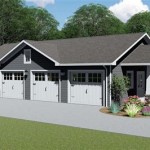Designing Your Tea House: A Guide to Create a Peaceful Retreat
Tea houses have been a symbol of tranquility and relaxation for centuries, offering a space to unwind, sip tea, and appreciate the beauty of nature. If you're dreaming of creating your own tea house, here are some essential considerations and tips to guide your planning process: 1.Choosing the Right Location:
- Select a serene spot in your garden or backyard that offers privacy and a connection with nature. - Consider factors like the orientation of the sun, prevailing winds, and proximity to trees or water features for a harmonious setting. 2.Determining the Purpose:
- Define the primary purpose of your tea house. Will it be a place for quiet contemplation, social gatherings, or a combination of both? - Consider the activities you'll engage in, such as tea ceremonies, reading, or meditation, to determine the size and layout of the tea house. 3.Design and Style:
- Choose a design that complements your home's architecture and the overall aesthetic of your garden. - Consider traditional Japanese tea houses, Chinese tea pavilions, or modern minimalist structures for inspiration. 4.Materials and Construction:
- Opt for natural materials like wood, bamboo, or stone that blend seamlessly with the surrounding environment. - Ensure proper insulation and weatherproofing to create a comfortable space year-round. 5.Layout and Functionality:
- Design the interior space to facilitate smooth movement and create a sense of flow. - Include essential elements like a tea table, comfortable seating, and storage for teaware and other essentials. - Consider adding a small kitchen or pantry for preparing tea and snacks. 6.Decor and Ambiance:
- Create a serene atmosphere through simple and elegant decor. - Incorporate natural elements like plants, flowers, and artwork inspired by nature. - Choose soft lighting and calming colors to promote relaxation and mindfulness. 7.Outdoor Elements:
- Design a pathway or stepping stones leading to the tea house, creating a sense of anticipation and arrival. - Surround the tea house with a landscaped garden featuring lush greenery, blooming flowers, and a tranquil water feature. - Add a sheltered porch or deck for enjoying tea outdoors on warmer days. 8.Privacy and Security:
- Ensure the tea house offers privacy from neighboring properties and passersby. - Consider installing screens, curtains, or bamboo fences for added seclusion. - Implement proper lighting and security measures to protect your tea house from intruders. 9.Maintenance and Upkeep:
- Create a maintenance plan to keep your tea house in pristine condition. - Regularly clean and maintain the structure, furnishings, and garden to ensure a welcoming and inviting space. By following these guidelines and incorporating your personal preferences, you can design a tea house that becomes a sanctuary of peace, tranquility, and harmony in your garden.
Japanese Tea House Plans

Tea House Plans Wood S Creative Builders

Japanese Tea House Plans Japanisches Teehaus Haus

Absolutely Breathtaking Pin Up Tea House Small Wooden Plans Micro Cabin Garden Shed Cottage Blueprints

Tea House Plans Oregon Cottage Company

View Japanese House Design Floor Plan Images Tea

The Plans A Detailed Photo Record Of Building Japanese Teahouse In
Kesurokai Japanese Tea House

Japanese Tea Houses All You Need To Know About Chasu

Japanese Tea House Plans








